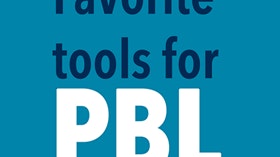Homepage
•
Learning Library
•
Blog
•
Stock your PBL toolbox with the right tools for the job
Expand breadcrumbs
Expand breadcrumbs
- Learning Library
- Blog
- Stock your PBL toolbox with the right tools for the job
- Homepage
- •
- Learning Library
- •
- Blog
- •
- Stock your PBL toolbox with the right tools for the job
Stock your PBL toolbox with the right tools for the job
By Team ISTE
March 24, 2015








